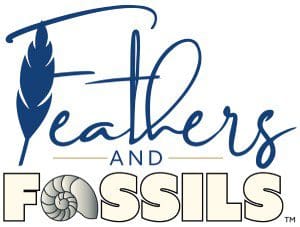You Are What You Eat: Dog And Cat Nutrition Myths (Part 1)
I’ll be completely honest – I cringe inside when a client brings up their pet’s diet. Not because I don’t feel comfortable discussing it, and not because I don’t have a lot to say. Rather, it’s the opposite… I WANT to talk about what to feed your pet! Boy, do I have opinions! (Don’t we all??) However, as a veterinarian, I try my best to base my nutrition recommendations and my personal opinions on research, facts, and 10 years of clinical experience.
It’s not uncommon for clients to come in with preconceived notions about what’s best to feed their dog or cat. Unfortunately, this is often based on the advice of breeders, groomers, the clerks at the local feed store or pet food palace, and/or internet “experts†with an agenda to sell their own diets. This is where I get to challenge those assumptions, hopefully gently, to help my clients make informed decisions about what is best to feed Fluffy or Fido.
Today I’d like to talk with you about some of the most prevalent myths out there regarding dog and cat nutrition, and what the research suggests instead. As always, PLEASE discuss all diet changes with your own veterinarian prior to making any changes.
MYTH #1: RAW DIETS ARE BETTER FOR DOGS AND CATS
This prevalent myth is possibly the most dangerous, because it not only poses a health risk to the pets eating the raw diet but also to the people who live with that pet. Dogs and cats who eat a raw diet (uncooked or unpasteurized) are more likely to harbor infectious bacteria such as Salmonella, E. Coli, Listeria, and so on. Relevant references include the AVMS Guidance on Raw, Undercooked Animal Protein, and the FDA Guidance on Raw Pet Food Diet. Stool samples from dogs fed a raw food diet have higher rates of these pathogens, which poses a risk to the humans around them. Feeding raw, uncooked meats also poses a risk of exposure to parasites such as tapeworms and protozoa, including Toxoplasma. Before considering a raw diet for your dog or cat, please discuss the risks with your veterinarian.
MYTH #2: GRAINS ARE BAD! GRAIN-FREE IS GOOD!
Although gluten intolerance, Celiac Disease, and grain-related allergies are becoming more prevalent in humans, this is not necessarily the case in dogs and cats. The vast majority of food-allergic dogs react to the PROTEIN source in their food, not the grains or carbohydrates. The most common food allergens for dogs are beef, chicken, and fish.
In fact, Grain-free diets have been consistently linked to development of a type of heart disease called Dilated Cardiomyopathy, or DCM (Today’s Veterinarian Guidance on Grain-Free Diet). This condition can be fatal if it progresses. However, many dogs who develop DCM due to eating a grain-free diet have been able to reverse or even completely recover from the condition after being changed back to a complete and balanced diet.
If you have an itchy, food-allergic dog, the chances are they are allergic to a particular protein source. A Veterinary Dermatologist is well-equipped to help you get to the bottom of your dog or cat’s food sensitivities.
MYTH #3: DOGS SHOULD CHEW ON BONES
“Let your dog chew on bones – it will keep their teeth clean!†This is a very prevalent opinion, but unfortunately, this suggestion is misguided. There are many risks when a dog is allowed to chew on bones, including fracturing or breaking their teeth; vomiting; diarrhea; choking; cuts/tears in the mouth, throat, or GI tract; and blockage of the stomach or intestines. These complications are not uncommon for dogs who chew on bones, and unfortunately, the situation can become quite severe, even life-threatening in some cases.
Dogs (and cats) should never be allowed to chew on bones, antlers, or anything too hard. A good “rule of thumb†is to press your thumbnail into the surface of the object – if you can’t depress it with your thumbnail, it’s too hard for your pet to chew on.
Here are some alternatives to consider for dogs who love to chew:
You can also visit the Veterinary Oral Health Council for more information and product suggestions.
MYTH #4: IF I CAN EAT IT, SO CAN MY PET
We love to shower our pets with affection, and sometimes that comes in the form of treats. However, it’s important to check the safety of the foods you’d like to feed your dog or cat BEFORE you give them to your pet. There are many foods that are safe for humans but not safe for our pets, such as grapes, raisins, onions, garlic (onion and garlic powder are even more dangerous!), and chocolate. One artificial sweetener, Xylitol, is highly toxic to dogs and cats – even a small amount can cause severe hypoglycemia (low blood sugar) and liver failure, which can prove fatal if not treated aggressively and quickly.
Before feeding foods, treats, or supplements to your pet, please check with your veterinarian to ask about its safety. You can also visit the Pet Poison Help Online for more information.
I hope this has been helpful in bringing to light some of the popular myths you might encounter on a regular basis. Please see my next article, Nutrition Myths Part 2, for even more of these un-facts!
